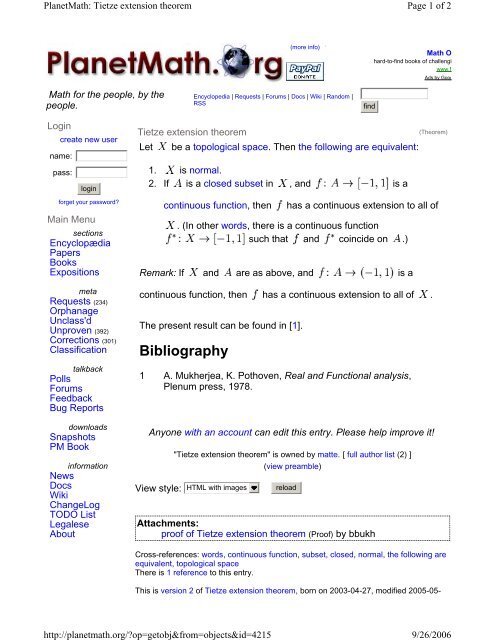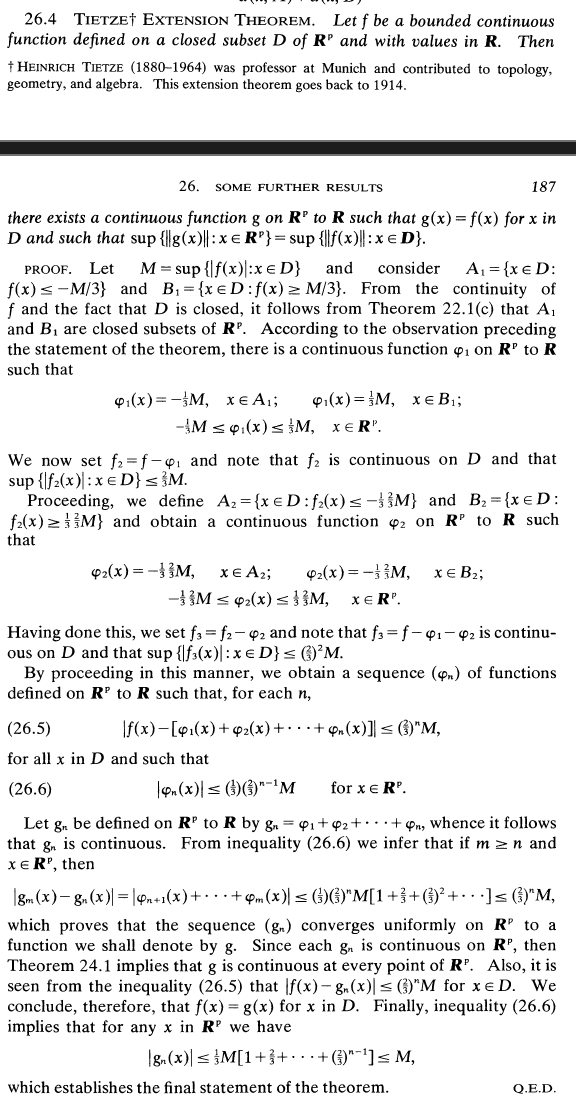Reference




Reference




Moonshot's Answer
Tietze's Extension Theorem holds historical significance as it was a key development in the field of topology during the early 20th century. The theorem was first proven by Heinrich Tietze in 1925, and it has since become a standard result in topology courses. It is closely related to Urysohn's Lemma, which is a crucial property of normal spaces that deals with the separation of closed sets by continuous functions.
The theorem has been influential in various areas of mathematics, including functional analysis, where it is used to prove the Hahn-Banach theorem, and algebraic topology, where it is used in the study of topological vector bundles. It has been referenced in numerous mathematical publications and is a part of the standard curriculum in undergraduate-level topology courses.
The theorem's historical context is fascinating. It was preceded by similar results for Euclidean spaces, with proofs given by de la Vallée Poussin in 1916 and Carathéodory, which were credited to H. Bohr. Tietze's theorem generalized these results to all normal topological spaces.